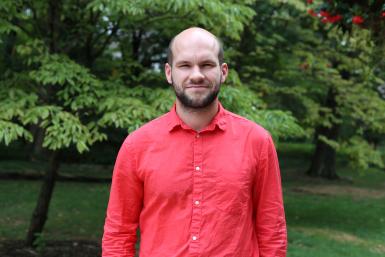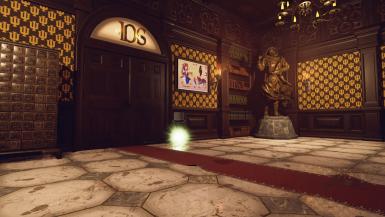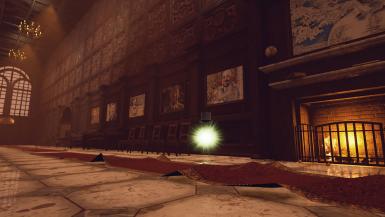Game design students celebrate commencement in virtual Franklin Hall
Torches light the entryway to the Beckley Studio. A suit of armor guards the Indiana Daily Student newsroom. Portraits of game design faculty line the walls of Presidents Hall.
Like all other campus events this spring, The Media School’s annual game design commencement celebration had to be held virtually. But instead of seeing the virtual format as a limitation, lecturer Rush Swope used it as an opportunity.

Students and faculty celebrated last month in a virtual Franklin Hall that Swope created using SpatialOS technology.
“It’s a fairly faithful recreation of the commons in terms of the architecture, the structure, except I just changed the theme of it to kind of like old magic, Hogwarts-esque,” he said.
Just like the real Franklin Hall, Swope’s environment included the game design lab, the IDS, WIUX Pure Student Radio, the Institute for Communication Research, a screening room and the Beckley Studio. But the virtual Franklin Hall also featured flying books and changing picture frames to reflect the magical theme. The ceremony ended with IU trident-shaped fireworks.
Senior lecturer Norbert Herber created music for the environment.

“The environment that Rush built was so beautiful. The first glimpse that you get of it is really dramatic,” Herber said. “You go down this hallway and it just kind of explodes into this common space, and I wanted the music to help honor the graduates but also to set up the beauty of the space that everyone was about to enter.”
The music was a combination of “Hail to Old IU” and “Pomp and Circumstance.”
There were some positive aspects of celebrating in the virtual environment, Swope said.

“It’s good because they can see everyone’s work,” he said. “We had 300 images that we needed to display, so they’re all looping. It’s hard to do that even in the commons, so with the virtual commons, they can go to different picture frames and see different work and spend as much time as they want there.”
The virtual event preserved many of the game design celebration’s traditions. For example, at the beginning and end of each school year, game design faculty and students roll a 20-sided die, and each side has a specific meaning.

This semester, they dropped the die inside the virtual environment instead. They rolled a 16, which means members of the outgoing graduating class must introduce at least one current student to someone in the industry within five years.
Swope and Herber said the project reflects what they teach their game design students in class.
“It was kind of a good way for us as faculty to practice what we preach in that we were trying to get everything together quickly, and something like this takes so much work,” Herber said. “Because he’s really good at what he does, we landed on our feet and everything was great.”

Swope said he wants to keep this environment live and expand it to better showcase projects including music and interactive work, and to include students from the entire Media School.
He plans to change the theme each year and is already brainstorming ideas for next year’s celebration.
“I wanted them to have someplace to show off their work and hang out, which is usually what they do that day,” he said.

